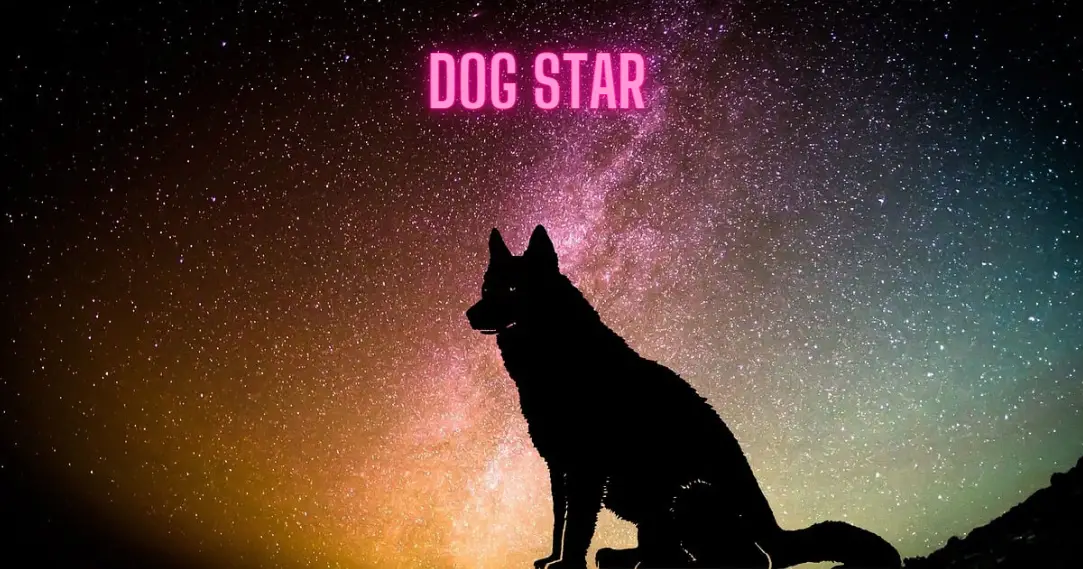Introduction
There are innumerable stars that shine brightly throughout the length of the night sky, each of which has its own unique identity and importance. One of these celestial entities, Sirius, commonly known as the Dog Star, has captivated the imagination and piqued the curiosity of people for generations. This curious star was given its unique name as a result of a blend of ancient mythology, observations of the cosmos, and historical connections. In order to solve the mystery of how Sirius got its nickname, the Dog Star, let us set out on an adventure.
Mythology from Antiquity
We need to research old mythology in order to learn where the moniker “Dog Star” came from in the first place. Sirius was held in high regard by the ancient Egyptians, who viewed it as a celestial entity of tremendous significance. They believed that its annual return in the pre-dawn sky foretold the approaching flooding of the Nile River and connected it with the goddess Isis. Additionally, they believed that Isis was responsible for the floods. This incident ensured the fertility of their fields and was of critical importance to their agricultural operations.
In Egyptian mythology, the star Sirius was personified as the goddess Sopdet, who was typically shown as a female figure wearing a lofty and spiked crown. It was believed that Sopdet would accompany the soul of Osiris into the afterlife because of their close relationship. Additionally, the goddess Bastet, who had the body of a woman but the head of a lioness and was regarded as a guardian deity, was connected to Sopdet in Egyptian mythology.
The connection between Sirius and dogs may be seen in both Greek and Roman mythology. Throughout history, dogs have been associated with Sirius. Both cultures held a high regard for the constellation Canis Major, which is most known for having the star Sirius as its brightest member. The constellation Canis Major is sometimes depicted as a large dog chasing Orion, the hunter, across the night sky. Mythology identifies this canine as Laelaps, a hound known for its exceptional sense of smell and ability to follow trails.
According to a different myth, the constellation Canis Major is supposed to be a representation of Maera, the loyal dog of Icarius who was turned into a constellation following her terrible death. These tales emphasize the steadfastness and companionship that are ascribed to dogs, which reflects the high regard with which dogs are held within human civilization.
Observations Regarding the Heavens
In addition to being taken from mythology, the dog-like qualities that are associated with Sirius can also be derived from the astronomical activity of the star. The Dog Star is one of the brightest stars seen in the night sky, easily outshining the majority of the other stars. Sirius is one of the stars that is located at a distance of around 8.6 light-years from Earth, making it one of the closest stars to us. This proximity to Earth is the reason why Sirius shines so brightly.
In addition, Sirius is a member of a binary star system, which consists of the component known as Sirius A, which is more luminous, and its companion, Sirius B, which is a white dwarf that is smaller. It is believed that the binary character of Sirius, which consists of two celestial bodies like a dog and its friend, is the source of the “dog” analogy. This is because the binary nature of Sirius resembles a dog and its companion.
Throughout history, the phrase “Dog Star” has been used to refer to the beginning of the hottest part of the year. This association has been maintained throughout the term’s usage. The rising of the star Sirius in the early sky during the summer in ancient Greece and Rome was commonly connected with extreme heat, drought, and the “dog days” of summer. It was hypothesized that this time period would begin around the end of July and last until approximately the middle of August. When the Sun and Sirius appeared to rise and set at the same moment, people believed that a particularly hot period of time had arrived.
Conclusion
The fascinating combination of ancient mythology, astronomical measurements, and historical associations can be used to explain the cryptic identification of Sirius as the Dog Star. The term “Dog Star” has made an everlasting imprint on the human psyche due to its association with the respected role that Sirius played in Egyptian mythology as well as its relationship with canine constellations in Greek and Roman stories.
Sirius is a star that has always held a special attraction for people, whether they are stargazers or astronomers. Despite the fact that the riddle behind the Dog Star’s name has been solved, Sirius continues to captivate people. The fact that Sirius, often known as the Dog Star, occupies a prominent place in the night sky and possesses a number of unique celestial characteristics ensures that it will continue to shine brightly in our collection.
![]()
